The last few decades have seen what some describe as a “genetic revolution”. Advances in genetic science have seen genes become all-encompassing in political and scientific discussion.
Do a quick survey of recent stories, for example, and you will find research that claims “intelligence, creativity and bipolar disorder may share underlying genetics” and a much-reported story that found that Holocaust survivors may have passed ontrauma to their children through their genes. Genetics has come to explain almost everything about our identities, whether it is our weight, our sexuality, or even if we are likely to become a criminal.
But is this based on sound science, or is it instead a cultural phenomenon using science to back it up? That is among the questions Professor Deborah Lynn Steinberg asks in her new book Genes and the Bioimginary.
Professor Steinberg, who researches gender, culture and media studies at the University of Warwick, has been studying the encounters between genes and culture for many years now. Steinberg began working on this issue over twenty years ago through an investigation into genetics, reproduction and the idea of “progress”. In her latest book she has expanded on this to look at the genetic revolution as a whole.
In Genes and the Bioimaginary, Steinberg investigates the crossover between genetic research and our society. Steinberg argues that “culture — including science — forms the context, locus and foundation of the search for genes.” In other words, genetic science both shapes and is shaped by culture, or as Steinberg explained to me “the popular has infused the scientific even as the scientific has infused the popular”.
What does this actually mean? Most scientists will tell you that science is “objective”: science presents the facts and it is up to society to interpret these facts and decide how to use them. Steinberg argues, however, that it isn’t as simple as that, particularly when it comes to genetics. Culture doesn’t just define how we interpret the science, but influences the production of the science itself.
Steinberg uses a number of case studies to emphasise this fact. In one chapter, Trace: On Genes and Crime, Steinberg investigates the search for a “criminal gene”. Steinberg examines the research that lead to the production of The Genetics of Criminal and Anti-Social Behaviour in the 1990s, a major symposium bringing together research on genetic criminology. The purpose of the symposium was simple: to investigate whether genes can influence our likelihood of engaging in criminal or anti-social behaviour. Researchers believed they found a positive correlation, one researcher stating that “genes are likely to influence the occurrence of criminal behaviour in a probabilistic manner by contributing to individual dispositions that make a given individual more or less likely to behave in a criminal manner”.
It is here where Steinberg locates a problem. Put simply this research is trying to find a biological answer for what is inherently a cultural problem. “Crime” and “anti-social behaviour” are social constructs, which change depending on our society at the time. What is considered a crime in one decade may be considered normal behaviour the next, making a “biological answer” for crime very difficult to find indeed.
In fact Steinberg argues that much of the genetic research, criminological and other, follows from this false premise. In another chapter she looks at the search for the gay gene, which is again the search for a genetic cause for a socially constructed identity. In doing so, Steinberg argues that gay gene research, which argues homosexuality is passed down by mothers, is based on clichéd social assumptions. As she said to me:
“In many different respects the premises of the research were all embedded in pre-existing cultural stereotypes and ideas about gay men and about their relationships with their mothers. They were, in a way, tired tropes. What I was suggesting there is that it’s science from a false premise. The underlying assumptions that organise doing that kind of research were already problematic.”
So why is it that scientists are engaging in this form of research? To understand this it’s worth looking at another of Steinberg’s case studies: the impact of genetic research on women.
In her first chapter Steinberg looks at the role genetic research has played in reproductive processes. In doing so she argues that by its nature this research is predominantly focused on the female body, both framing women’s bodies as to blame for reproductive problems, and then implementing often intrusive procedures to solve the perceived problem. We can see this predominantly through the development of IVF capabilities, an intrusive and often painful medical procedure that only has an impact on women; a man’s role may be active in other ways, but for them the process is not invasive in a bodily sense. Steinberg argues:
“The adversarial construction of the female body is heavily leveraged by the adversariality that pervades the ‘culture wars’ surrounding abortion and the larger questions of women’s bodily sovereignty, reproductive rights and (de)legitimacy as citizens and social actors.
“In this context, the ‘guilty’ burden of genetic risk is, I would suggest, disproportionately weighted onto the female body, whose reproductive processes are already viewed with concern, if not opprobrium with dominant and legal discourse.”
It is here that we can see the paradoxical role of genetic research in modern society. Genetics has been used both to enforce and upend our social norms and constructions. The best examples here are the search for the gay gene and genetic research involving women. While Steinberg expected gay gene research to result in a moral panic about homosexuality, for example, what she found was that it was met with more liberal responses — calls, for instance, that the gay gene should be used to promote gay rights. The moral panic arose instead about the possibility that women would abort pregnancies that might result in gay offspring. Indeed, genetic research prospects are frequently met with calls to ban abortion based on genetics, in turn enforcing control of female bodies through the restriction of abortion rights. These trends match our social response to these issues, with gay rights advancing across the Western World while abortion rights go backwards.
It is in this context that Steinberg argues that genetics has become a “spectacle”. Genes have become all-encompassing, capturing our cultural and media imaginations in a way science often fails to do. Herein lies the problem, however. In capturing the imagination in this way the scientific debate is giving legitimacy to the cultural assumptions it is based upon — whether it is the existence of a criminal gene or the control of female bodies.
It is at this point that Steinberg comes up with a controversial, and extremely thought-provoking conclusion. At the end of the book Steinberg professes an “antipathy for genes” and a strong “desire to repudiate them”. While she acknowledges the scientific reality of the existence of genes, she admits a wish this wasn’t the case, a desire for us to reject the genetic revolution and all that it holds. As she argues:
“My disaffection for genes arises in part from the instabilities or illogic I perceive in the characterisation of genes as facts. But it is more than this; it is because the conditions of genes — the realities that produced the knowability of genes and that in turn, genes produce — disturb me.”
Steinberg argues that the seductions of genetic research are based on the very things that genes can’t explain. What makes genetic science attractive therefore lies partly in fantasies of mastery and control of human uncertainties: securing identity, preventing crime or illness, fostering desired capabilities, easing suffering, righting wrongs.
Steinberg not only questions the impacts of scientific research but the social conditions and cultural context that make it persuasive. In doing so she opens up fascinating discussions about not just the politics of science, but the purpose of it as a field. It is for this reason this book is worth reading.
Genes and the Bioimaginary: Science, Spectacle, Culture, by Deborah Lynn Steinberg is published by Ashgate
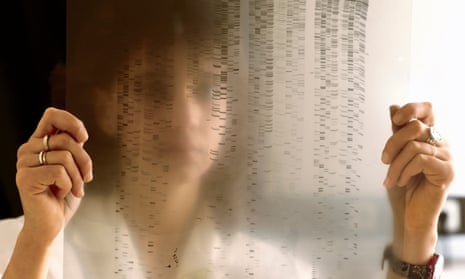
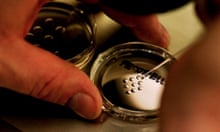
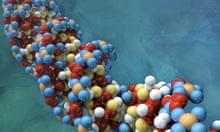
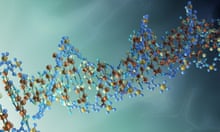

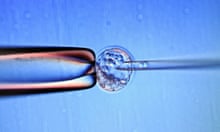
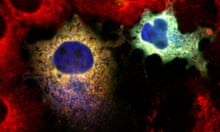

Comments (…)
Sign in or create your Guardian account to join the discussion